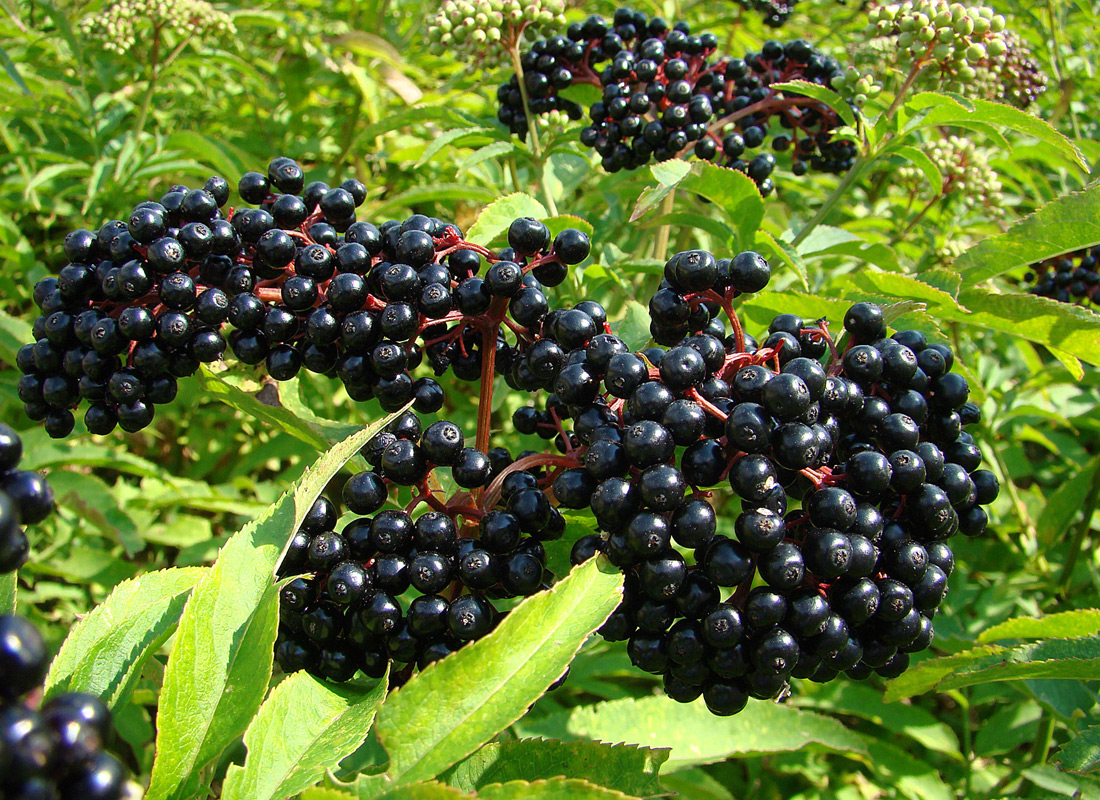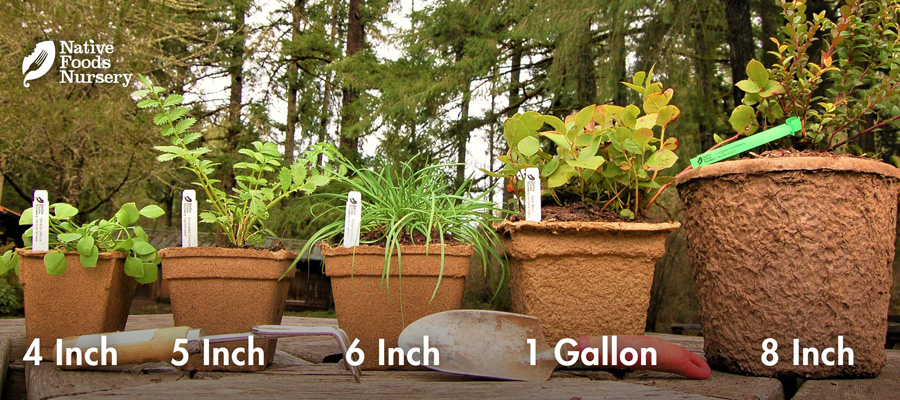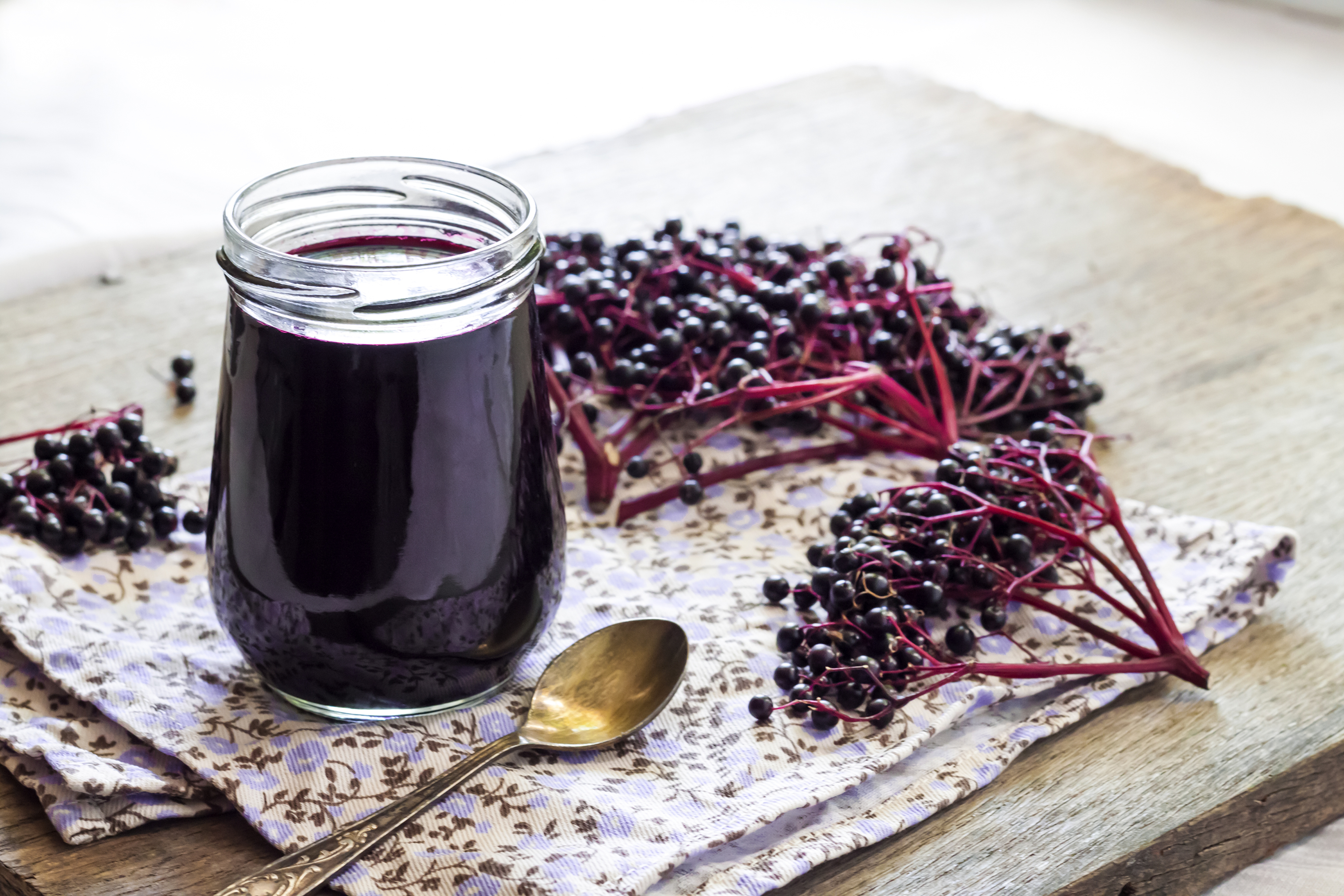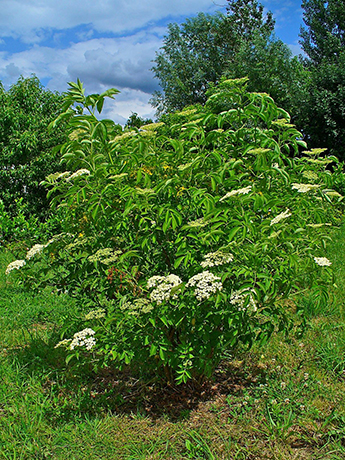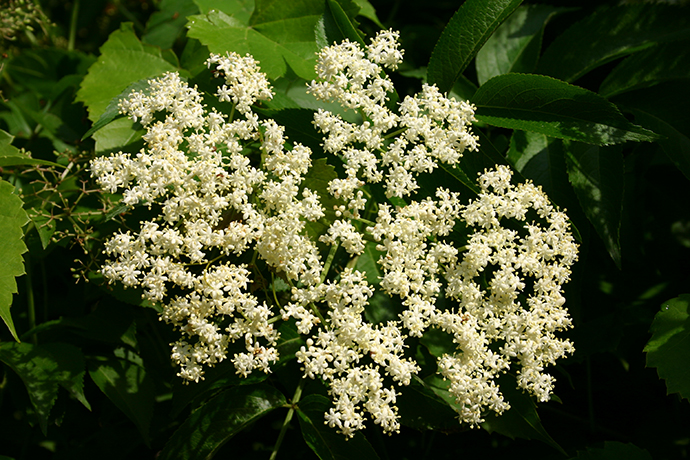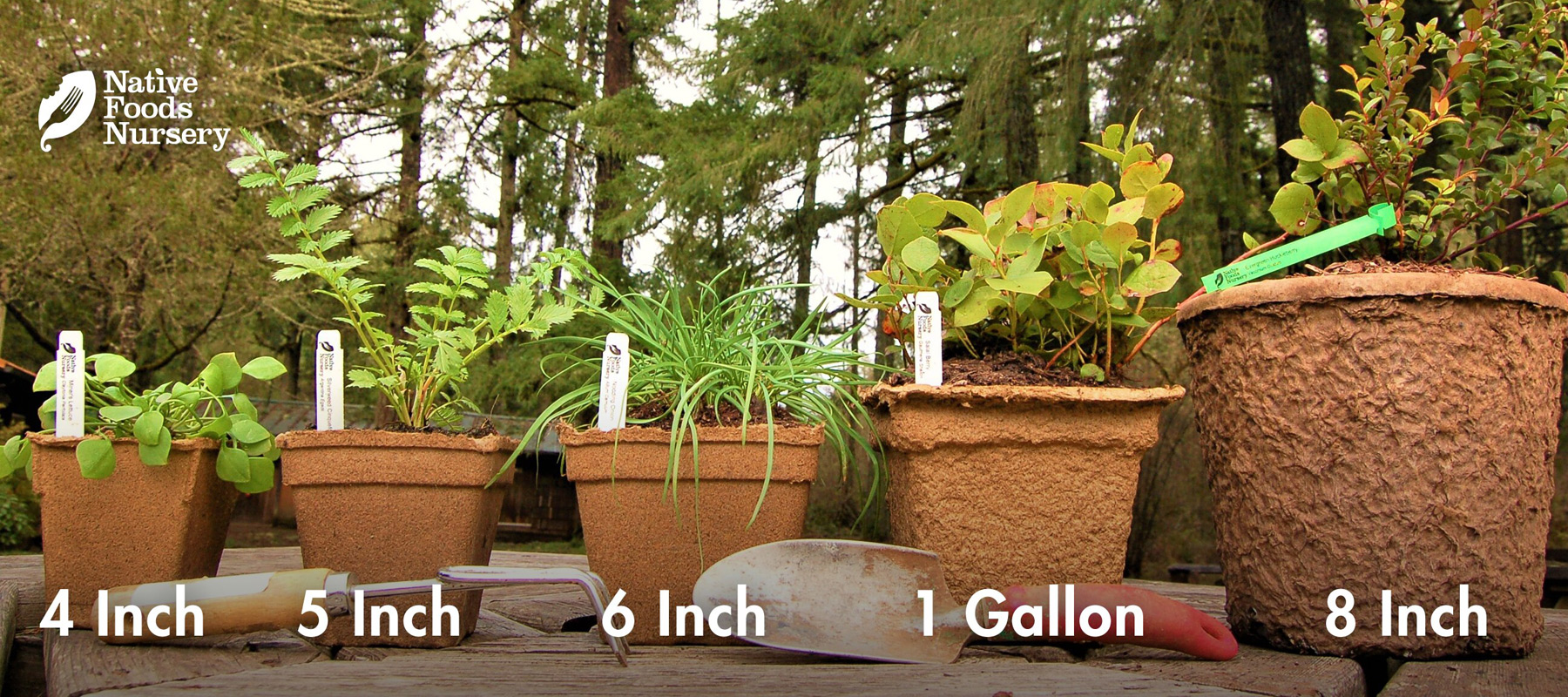Black Elderberry - York-Nova-Bob Gordon
- Current Stock:
- 0
- Other Names:
- American Elderberry, American Black Elderberry, Common Elderberry
- Latin Name:
- Sambucus canadensis
American Black Elderberry is a fast-growing, wildlife-magnet shrub that lights up the landscape with lacy spring bloom and abundant late-summer clusters of deep purple-black fruit. It’s equally at home in edible hedges, rain-garden edges, and native orchards, delivering beauty, pollinator forage, and generous harvests in one resilient package [1][2][5][9].
Varieties we offer: ‘York’, ‘Nova’, and ‘Bob Gordon’. Yields improve with at least two varieties. ‘York’ is known for very large berries, ‘Nova’ ripens earlier with sweet, medium-large fruit, and ‘Bob Gordon’ bears pendulous (down-hanging) clusters that help deter birds; all three cross-pollinate well [3][11]. (See detailed COMPARISON TABLE at the bottom of the page.)
Note: Ripe berries and flowers are used for food; cook berries before eating (leaves, stems, and unripe fruit are not edible) [7][9].
Edible & Medicinal Uses
Cooked elderberries are delicious in syrups, jams, jellies, pies, wines, and cordials; the blossoms are classic for fritters, teas, and cordials [2][7]. Elderberries are notably rich in anthocyanins and other polyphenols, with research documenting high phenolic content and antioxidant capacity in American elderberry fruit [10][11][12].
Across North America and Europe, elder has long been used as everyday kitchen medicine. Elderflowers were steeped for fever and seasonal ailments, while bark and leaves saw careful use in purges and washes [6][5]. Today, lab and clinical studies—mostly on European elder (S. nigra) suggest a possible reduction in duration/severity of upper-respiratory symptoms in small trials and meta-analyses; larger studies are still needed [10][11][12][13].
Ornamental Qualities
Graceful, arching canes; showy, flat-topped umbels of creamy white bloom; and heavy, bird-loved berry clusters give elderberry multi-season appeal. It’s excellent as an edible screen, habitat hedge, or rain-garden shrub. Flowers feed pollinators; fruit supports many songbirds and small mammals [2][5].
Environment and Culture
Native to much of eastern and central North America—streambanks, thickets, wet meadows, and woodland edges—where it thrives in rich, moist, slightly acidic soils [1][2][5]. Birds disperse seed; stem-nesting bees use the pithy canes; wildlife forage on fruit and foliage [2][5].
Indigenous peoples across the continent continue to use and tend elderberries as food, medicine, and material culture (e.g., flutes, clapper sticks, dyes), maintaining living relationships and knowledge with this plant [5][6]. Please see our Charitable Giving page for how you can support.
Harvest, Care, and Preparation
-
Site: Sun to part shade (best fruit in full sun). Moist, well-drained, slightly acidic soil (target pH ~5.5–6.5) [2][4].
-
Water: Keep evenly moist, especially during establishment and fruit set [3].
-
Pruning: After year 2–3, renew by removing a portion of oldest canes each winter, or cut to the ground on a cycle if growing determinate cultivars like ‘Bob Gordon’ (yields can remain strong) [3][14].
-
Pollination: Partially self-fertile, but yields improve with a different cultivar nearby (e.g., ‘York’ × ‘Nova’ × ‘Bob Gordon’) [3].
-
Harvest: Clip whole clusters when fully colored and soft (usually Aug–Sept). Chill promptly or process; strip berries from cymes for cooking [2][7].
Attributes
Native Range: Eastern & central North America (Nova Scotia–Florida; west to Texas & Manitoba).
USDA Zones: 4–8 (most consistent); some cultivar guides report 3–9 depending on site and snow cover.
Ease of Care: Easy once established.
Deer Resistance: Moderate (protect young shoots where browse pressure is high).
Light Requirements: Full sun to part shade; best crops with 6–8+ hours sun.
Soil Type: Rich, moist, well-drained loam; slightly acidic to neutral (ideal pH ~5.5–6.5).
Water Requirements: Moderate; keep evenly moist during bloom and fruit set.
Pollination: Partially self-fertile; cross-pollination recommended. Plant two or more cultivars (e.g., York, Nova, Bob Gordon) within ~50 ft for bigger, more reliable crops.
Bearing Age: ~2–3 years from planting (full production ~year 4–5).
Size at Maturity: Typically 8–12 ft tall and wide; can be maintained ~6–8 ft with annual renewal pruning. (Cultivar notes: Nova often 6–10 ft; Bob Gordon ~7–10 ft; York vigorous.)
Plant Spacing: 6–10 ft (tighter for hedging; wider for airflow and picking access).
Bloom Time: Late spring to early summer (region-dependent).
Harvest Time: Late summer (Aug–Sept). Nova tends earlier; York mid-season; Bob Gordon mid–late—often extending the picking window by 1–2+ weeks.
Notes: Always cook berries before eating in quantity; do not consume leaves, stems, or unripe fruit. Steady summer moisture and full sun improve berry size, color, and yield. In summer-dry PNW sites, mulch generously and set drip irrigation for bloom/fruit set; lightweight netting protects ripening clusters (Bob Gordon’s down-hanging cymes can reduce bird pecking).
Comparison Table for Varieties
| Attribute | York | Nova | Bob Gordon |
|---|---|---|---|
| Bloom & Pollination | Late-blooming; partially self-fertile; best with a different cultivar nearby [1][2][3] | Mid-season bloom; partially self-fertile; pairs well with ‘York’ [1][2] | Mid to late bloom; partially self-fertile; pairs well with NE cultivars [1][3] |
| Ripening Window | Mid–late season (Aug–Sept typical) [1][3] | Tends earlier than ‘York’ in NE trials [1][4] | Ripens with ‘Adams 2’ in MO trials; even sets for efficient harvest [1][3] |
| Fruit Size | Very large — among the largest American cultivars [1][3] | Medium–large; sweet fruit [1][3] | Medium–large clusters; high juice yield [3] |
| Flavor & Use | Mild-tart; excellent for processing (syrup, jam, wine) [3] | Pleasantly sweet; versatile fresh-cooked uses [1][3] | Rich color/juice; pendulous cymes help deter birds; great for juice/wine [1][3] |
| Yield | Productive with cross-pollination [1][3] | Productive; best with cross-pollination [1][3] | Very high; top producer in Midwest trials [3] |
| Plant Habit & Size | Vigorous, upright-spreading; ~8–12 ft (can be maintained 6–8 ft) [2][3] | Compact–medium (often ~6–10 ft); tidy habit [3][4] | Vigorous; ~7–10 ft; determinate bearing suits renewal pruning [3] |
| Notable Traits | Among largest berries; reliable workhorse [1][3] | Earlier ripening; sweet fruit; pairs well with ‘York’ [1][4] | Down-hanging clusters (less bird pecking); industry favorite for juice [1][3] |
| Hardiness (guideline) | Zones ~4–8 (site dependent) [2][3] | Zones ~4–8 (site dependent) [3][4] | Zones ~4–8 (site dependent) [3] |
References
[1] USDA PLANTS Database — Sambucus canadensis profile.
[2] NC State Extension Plant Toolbox — Sambucus canadensis (culture, size, wildlife value).
[3] University of Missouri Extension (Center for Agroforestry), “Growing & Marketing Elderberries in Missouri” (cultivar notes: ‘York’, ‘Nova’, ‘Bob Gordon’; pendulous cymes; pruning).
[4] WVU Extension — Elderberry (site pH/culture; regional notes).
[5] NRCS/USDA Plant Guides — elderberry (ecology, wildlife use).
[6] Moerman, Native American Ethnobotany — Indigenous food/medicine/material uses of Sambucus.
[7] Oregon State University Extension — “Play it safe when preserving elderberries” (cook berries; safety).
[8] NCCIH — Elderberry: Usefulness and Safety (evidence summary & cautions).
[9] NC State — edibility & caution (cooked berries).
[10] Lee & Finn (2007) — polyphenolics/anthocyanins in American elderberry.
[11] Özgen et al. (2010) — total phenolics/anthocyanins & antioxidant capacity in S. canadensis.
[12] Hawkins et al. (2019) meta-analysis; Tiralongo et al. (2016) RCT — elderberry & URIs (mixed/suggestive evidence).
[13] University of Vermont Elderberry Guide — cultivar summaries and performance.
[14] Cultivar pruning/renewal guidance from U. Missouri & UVM grower guides.
Pot Sizing Guide
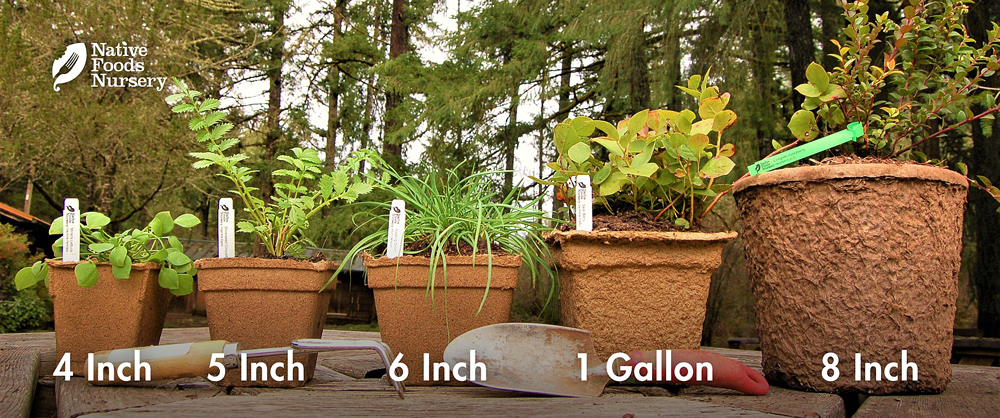
Planting Guide: American Black Elderberry (Sambucus canadensis)
Tip: Think “streambank edge.” Choose full sun and rich, moist, well-drained soil; keep steady water in summer and plant two or more cultivars (e.g., York, Nova, Bob Gordon) for bigger, more reliable crops.
Choosing a Site
Light: Full sun to part shade; best fruiting with 6–8+ hours of direct sun.
Soil: Loam or sandy loam with high organic matter; slightly acidic to neutral (about pH 5.5–6.5). Avoid waterlogging.
Space: 6–10 ft between plants (tighter for hedge). Elderberry suckers naturally; allow a clump or remove suckers to maintain size.
PNW note: In summer-dry areas west of the Cascades, site near a hose or drip line and mulch well; in hotter interior sites, afternoon shade can help fruit size and color.
Planting Steps
Timing: Plant in early spring or fall (fall preferred in mild PNW areas).
Prepare: Dig a wide hole; blend native soil with composted bark/leaf mold for moisture retention and drainage.
Set: Place at the same depth as in the pot; spread roots; backfill and water deeply to settle.
Mulch: 2–3 in. of wood chips/leaves to conserve moisture; keep mulch a few inches off the stems.
Watering & Care
Establishment (yrs 0–2): Keep soil evenly moist—do not let the root zone dry during bloom and fruit set.
After establishment: Moderate water needs; steady summer moisture improves berry size, color, and yield.
Feeding: Top-dress with compost each spring; avoid heavy nitrogen (excess shoots, less fruit).
Pruning: In late winter, remove a portion of the oldest canes and weak, crossing growth. Maintain a mix of young and 2–3-year canes (most productive). Bob Gordon also responds well to periodic renewal (cutting oldest canes to the base).
Pollination & Varieties
Elderberry is partially self-fertile, but yields are higher with a different cultivar nearby (within ~50 ft). Good pairs include York × Nova and adding Bob Gordon for reliability.
Ripening spread: Nova tends earlier, York mid-season, and Bob Gordon mid to late—often extending harvest by 1–2+ weeks. Bob Gordon forms down-hanging clusters that can reduce bird pecking.
Protection
Wildlife: Birds love elderberries—netting just as clusters color saves your crop. Deer browse can be moderate; protect young plants.
Airflow & sanitation: Space plants for airflow; thin after harvest; remove spent clusters and fallen fruit to limit foliar diseases.
Weeds: Maintain a weed-free, mulched zone 2–3 ft around stems to reduce competition.
Harvest Basics
Timeline: First light crops in 2–3 years; full production by ~year 4–5.
Season: Late summer (Aug–Sept). Clip whole clusters when fully colored, soft, and flavorful; chill or process promptly.
Kitchen: Strip berries from cymes (a fork helps) and always cook before eating in quantity—ideal for syrups, jams, pies, wines, and cordials. Blossoms are classic for fritters and teas.
Safety note: Do not consume leaves, stems, or unripe fruit. Avoid eating raw berries in large amounts; cooking neutralizes problematic compounds.
